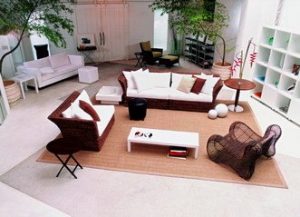
In my experience, nothing seems to annoy a judge more than being required to allocate who gets the personal property acquired during a marriage – TVs, beds, tables, paintings, etc. Accordingly, most attorneys tell their clients to try figure it out among themselves. When valuing personal property in a divorce, unlike insurance valuations, courts generally use “garage sale” values to determine what tangible personal property is worth, and almost invariably, it’s not worth much. Keep in mind that courts are vested with discretion to divide marital property in a divorce as they deem to be fair.
Thus, when you are paying your attorney $250 – $350 per hour, arguing over who gets the 2 year old flat-screen or the used king-sized bedroom set, the divorcing couple needs to make a cost-benefit determination of whether a fight over a possession is financially worth it, or whether to just take a deep breath and buy a replacement item.
All that said, there are some practical strategies for divorcing parties to use to make the division of household stuff less brain-damaging. For one, consider the kids. Whichever parent has the majority of time, the parties need to consider making the parent who has the majority of time with the kids the one who has most of the kid stuff. If parenting time is equally split, parties should be fair as to what goes where. It’s not rocket science, but, unfortunately in a emotional divorce, sometimes this common sense approach as to splitting the kids stuff gets lost. Even with clothing, parents oftentimes get sideways over kids wearing new clothes to one parent’s house and coming back in dirty sweats. Know that even stupid fights like over who gets what of kid stuff can sway a judge as to bigger issues (like who is a more mature parent and suitable primary caregiver), so don’t fight over the bunk beds, or video game console. Return the clothes the kids come to the house with, make sure the kids have similar items at each house, and show the court that conflicts over stuff, especially when kid stuff is involved, are low on the totem pole.
For items not related to kids, consider the cost-benefit analysis discussed above. Be fair about items you might recognize has nostalgia value to the other party. Know that family heirlooms brought into the marriage by a party most likely belong to that party who brought those heirlooms into the house. Tools or equipment that help the other party earn income should go to the party that uses those tools or equipment. Lawn and yard equipment should go to the party that can use them. Pictures and videos of children should be copied or divided. If there remain items that continue to be problematic, employ a procedure where disputed items are listed and employ a procedure similar to choosing teams for school sports… one party picks an item off the list, the other party gets the next pick, and so on until the list is gone. Sometimes, it is helpful to hire a mediator to help parties get over this final issue.
It can also be helpful if the opposing party over-values our client’s possessions to just “call the bluff” of the other party and offer to sell those items for cash at the other parties’ valuation. This tactic can oftentimes make the other party come off their inflated valuation. Again, stuff is really only worth a small fraction of what was paid for it to purchase it new (the informal estimation is that an item is only worth 10 cents on the dollar for a garage sale value of an item).
Understand that an impatient judge, in a divorce, can and might order stuff sold if the parties can’t figure it out, and that after paying the costs of a yard/estate sale, the return on personal property will be very unsatisfying. Fighting over personal stuff is often just not worth it and, ultimately, the cost of having to replace everything after the court orders a yard sale is going to be much more than perhaps just compromising on the tangible items in your home.
My hope is writing this article is to provide people with some practical things to think about. That being said, if you cannot agree on household items your attorney will certainly be there to fight for you. Just don’t let the cost of that fight outweigh the personal property you are fighting for. Finally, it should be noted that some items such as real artwork or collectibles may have a value worth fighting for. Each case is different and you should discuss your options related to personal property with your divorce attorney.



